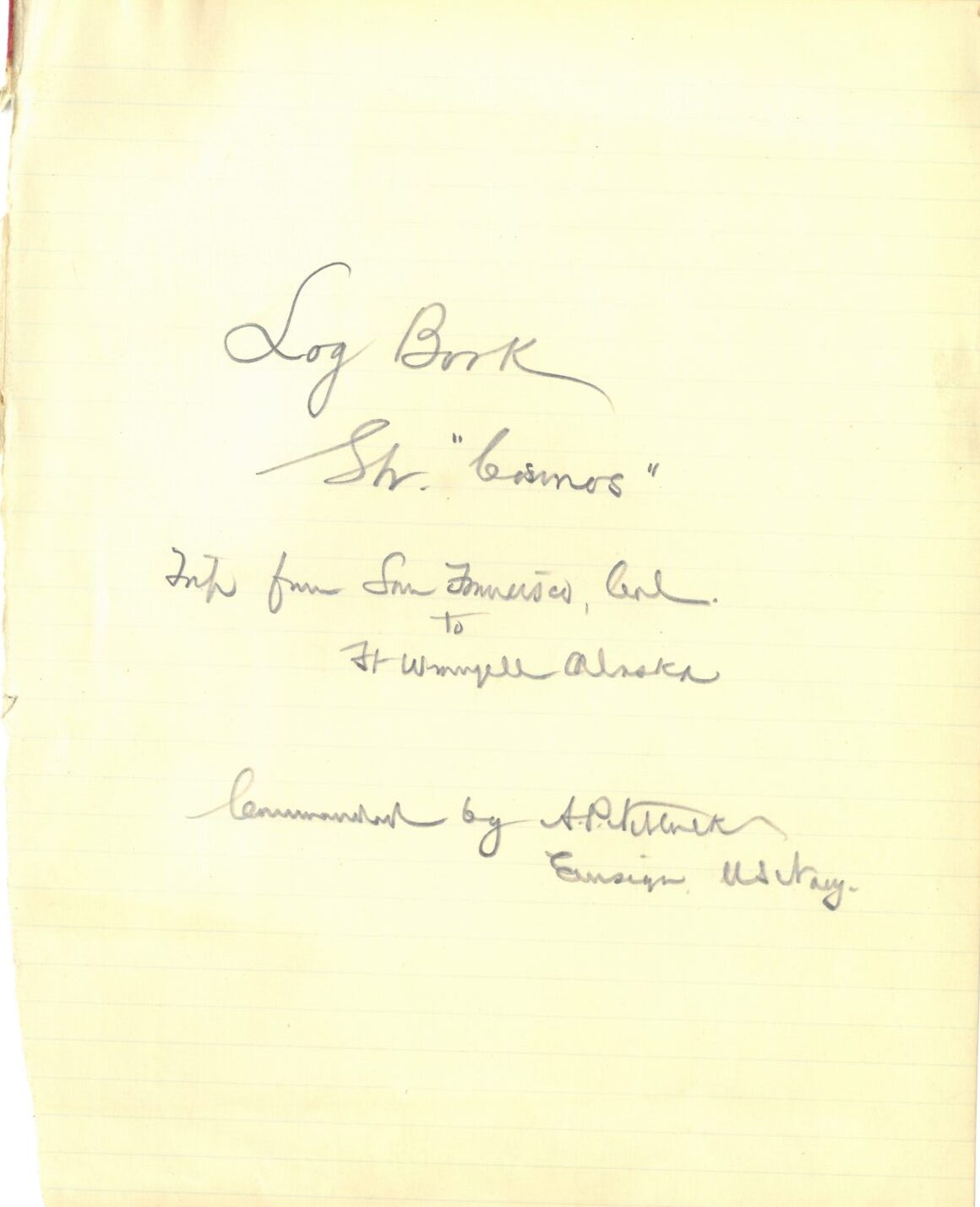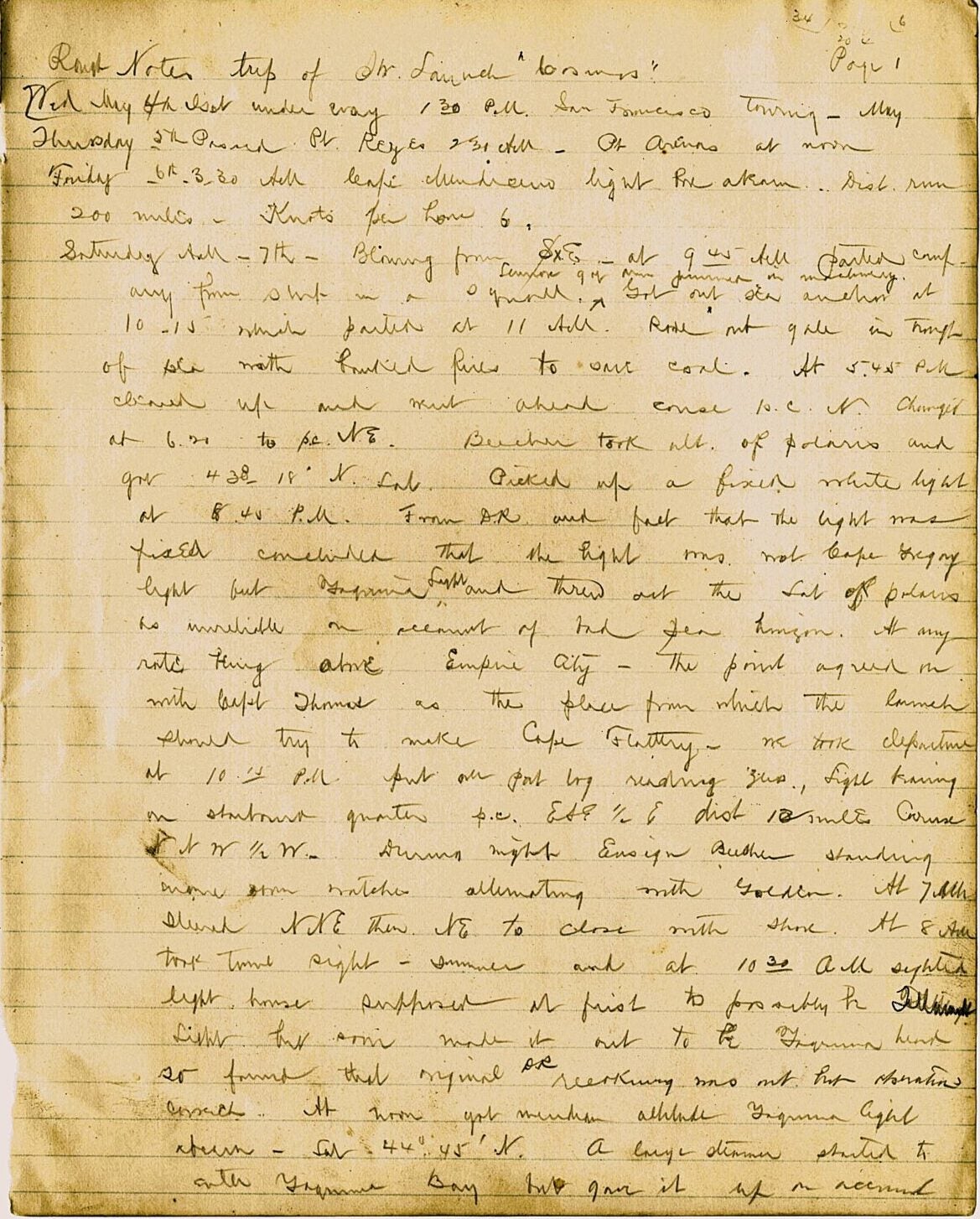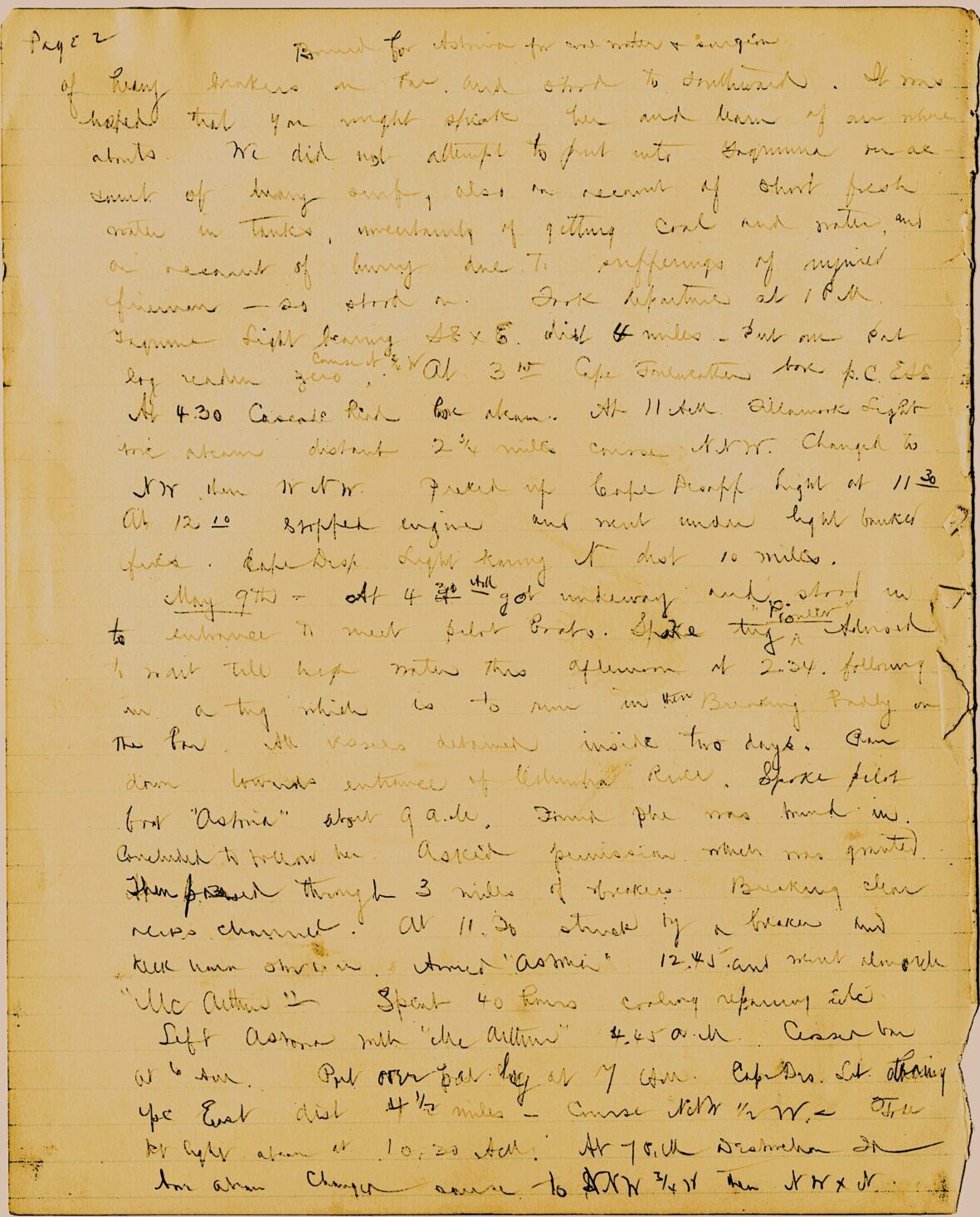Cruise of the Cosmos
Warning: This post contains graphic content that may be upsetting to some people.
 This post displays the Log Book of the Steamer “Cosmos” Trip from San Francisco, California to Ft. Wrangell, Alaska, Commanded by A. P. [Albert Parker] Niblack, Ensign, U. S. Navy, 4 – 11 May 1887. It also includes related to the exploits of Ensign Niblack and his crew.
This post displays the Log Book of the Steamer “Cosmos” Trip from San Francisco, California to Ft. Wrangell, Alaska, Commanded by A. P. [Albert Parker] Niblack, Ensign, U. S. Navy, 4 – 11 May 1887. It also includes related to the exploits of Ensign Niblack and his crew.
Future Admiral Albert Parker “A.P.” Niblack, 27, had graduated from the U. S. Naval Academy at Annapolis, MD in 1880. However, after seven years in the Navy, he remained a lowly ensign, the most junior rank for naval officers. He had been serving on the USS C. P. Patterson, doing Coast and Geodetic survey work, since 1884. It was not so highly prized as service aboard the more glamorous combat ships. Niblack’s career seemed dead before it even began.
Then, in May 1887, Ensign Niblack got a big break. The Navy ordered the C. P. Patterson to Fort Wrangell, in Alaska Territory, to survey and map the coastal waters. The Patterson’s Captain, Lt. Commander Charles M. Thomas, assigned Niblack to command the ship’s steam-powered launch, the USS Cosmos on the voyage. The Cosmos, with a crew of one other officer, Ensign Beecher, and 5 enlisted men may have been Niblack’s first command. The Cosmos was small and unimposing. It was only 52 feet long, and 12 feet wide. It weighed only 23 tons and could float in 4-1/2 feet of water. In addition, the Cosmos was going to be towed to Alaska by the Patterson. Niblack’s appointment offered little chance for promotion.
 The digitized documents that follow tell the story of the Cosmos’ exciting, but terrifying, voyage to Alaska. The documents include Niblack’s handwritten log of the voyage and four clippings from at least three different West Coast cities, reporting the little launch’s heroic deeds.
The digitized documents that follow tell the story of the Cosmos’ exciting, but terrifying, voyage to Alaska. The documents include Niblack’s handwritten log of the voyage and four clippings from at least three different West Coast cities, reporting the little launch’s heroic deeds.
At first, the voyage proved uneventful. Then, on 7 May, while 25 miles from land, a great storm arose. The Cosmos’ towline snapped and she floated away in high winds, towering seas, and without power. Disaster followed disaster. A huge wave surged over the Cosmos and smashed the deck house to bits, thus eliminating any shelter for the men on deck. While new and well-built, water then began to leak into the seamen’s sleeping quarters, drenching the crew’s bedding. Then, in an attempt to start the engines, Seaman Lennox, the ship’s machinist, got his hand caught in the gears, causing him excruciating pain. The violent motion of the ship, and the action of the winds and waves, caused the propellers to move back and forth continually Lennox’s hand between the gears, adding to his agony. It took the entire ship’s company and some time to extricate Lennox and get the Cosmos moving under her own power.
In view of Lennox’s injury and shortages of coal and water, Niblack sailed the Cosmos to Astoria, OR, on 8 May, where she braved 3 miles of breakers at the bar to enter the harbor. It was a significant achievement in seamanship. No ships had crossed the bar, in or out, in three days. Moreover, five of the Cosmos’ crew had been too seasick to work during the storm and Niblack had to do the work of the five sick men in addition to his own.
After repair work in Astoria, loading coal and water, and finding a surgeon for Lennox, the Cosmos headed out to sea again, on 9 May, to attempt a rendezvous with the Patterson at Port Townsend, WA. Several hours later, she “sighted a sealer displaying signals of distress”. The sealer proved to be the “Angie Dollie” which had just rescued 25 men from the Ocean King, which had “foundered off Kona Bay” on 7 May. Niblack took all 25 men on board the Cosmos as passengers and carried them to Port Townsend.
When Niblack and the Cosmos arrived in Port Townsend, on 10 May, with the crew of the Ocean King on board, they found the C. P. Patterson already in port. The Patterson’s crew, having reported the Cosmos lost at sea, crowded the rigging, and gave her “three times three cheers”. The people of Port Townsend then “gave the hardy voyagers a royal welcome.” The news of the Cosmos’ survival, the rescue of the Ocean King crew, and Ensign Niblack’s superb seamanship soon spread up and down the coast as the clipping attached attests[2]. Whether Niblack was in any condition to celebrate with them is another question. He had had only three hours of sleep in the previous four days and was probably fast asleep.
In future years, Niblack rose to prominence in the Navy, sparked in part by the notoriety he had gained in command of the Cosmos. He became a noted expert on naval tactics and strategy and corresponded with Theodore Roosevelt and others interested in naval topics. He served as a naval attaché in several European capitol cities. He served heroically during the Spanish American War, the Boxer Rebellion in China, and the Vera Cruz landings in Mexico, and then rose to command all American naval forces in the Mediterranean during World War I. He subsequently served in various staff positions and on international naval committees. He was honored posthumously in 1940, when the Navy launched a destroy with his name: USS A. P. Niblack (DD-424).[3] These facts and more relating to Niblack’s subsequent career are also documented in the Albert Parker Niblack Collection.[4]
[1] USS COSMOS File (Jan.-May 1887), Albert Parker Niblack Collection, East Carolina Manuscript Collection (#1080.3.p) J. Y. Joyner Library, East Carolina University, Greenville, NC 27858-4353; or follow this link to the online finding aid: Albert Parker Niblack Collection – Collection Guides (ecu.edu)
[2] Niblack received an official letter of commendation for his actions in rescuing the crew of the Ocean King. See log entry for 12 May 1887. https://www.naval-history.net/OW-US/Patterson/USCGSS_Patterson-1886-87.htm
[3] Vice Admiral Albert Parker Niblack, U. S. Navy, Deceased. chrome-extension://efaidnbmnnnibpcajpcglclefindmkaj/https://www.history.navy.mil/content/dam/nhhc/research/histories/bios/niblack-albert/Niblack.pdf
[4] Albert Parker Niblack Collection – Collection Guides (ecu.edu)

